21. NORTHWEST NAVE FUNERAL PALL II
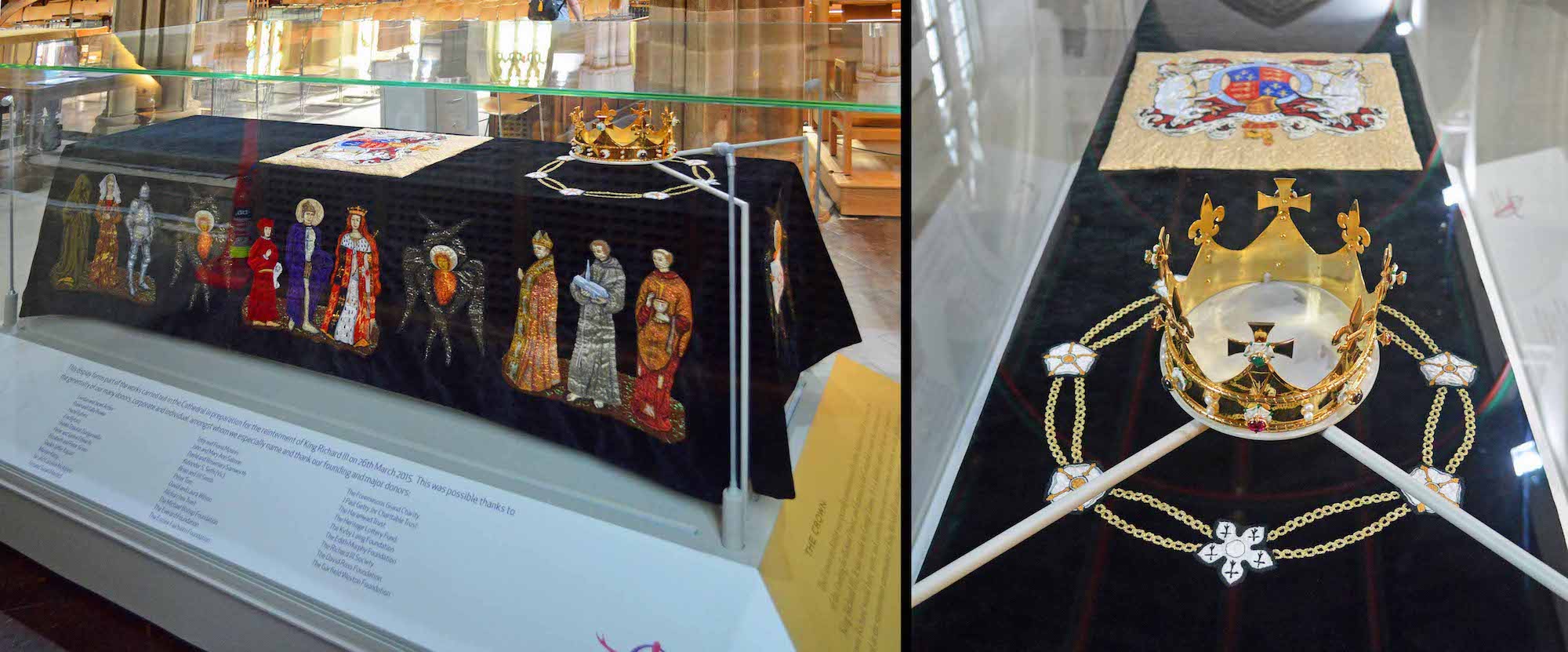
On this side are depicted, from left: a shrouded medieval figure, a lady and a knight; a knight in armour with page, and King Richard’s queen in heraldic robes; a medieval bishop, friar, and priest. The various groups of three on the pall are separated by six seraphim. On top of the pall is a funeral crown which is a replica of a medieval crown of the sort Richard would have worn on ceremonial occasions, set with semi-precious stones and pearls. PLAN
23. WHATTON MEMORIAL, WINDOW
The large monument is a memorial to John Whatton and his two wives. Sir John Whatton was the High Sheriff of Leicestershire in 1638. The window may illustrate the conversation Jesus had with the rich young ruler who went away sorrowful on learning he had to choose between keeping his riches and following Christ.
24. PULPIT, CANDLE, LECTERN
Across the front of the nave in their traditional positions are the pulpit, Paschal candle and lectern. Of these, the lectern is of most interest. It has the expected brass eagle standing on the globe of the world, but below this is a more intricate structure which may allow the height to be varied. Bible readings are given from the lectern, and the Gospel message is proclaimed from the pulpit.
26. CATHEDRA AND ALTAR
The new cathedra is of contemporary design. It is made of black American walnut, decorated in coloured leather. The modern seat is lightweight and mobile. A high matching wooden cross towers above. The cathedra is the Bishop’s seat, and its presence makes this church a cathedral. The marble altar is square and sits on a small raised octagonal podium.
27. SANCTUARY DETAIL
The magnificent screen was designed by Sir Charles Nicholson and carved by Bowman of Stamford. It stood at the end of the nave between the 1920s and 2014, separating the nave from the chancel; it was a focal point of the interior and lent it great dignity. Now it has been moved further Eastwards to open up the new sanctuary area.
28. CROSSING (SANCTUARY) CEILING
The new sanctuary sits directly beneath the tower. Above it is this fine ceiling with the Jerusalem cross at the centre, four corner square-shaped ornamental stars with a rose at each centre, and other smaller decorative rectangles. The central square may be removable to allow building materials up into the tower.
29. NORTH TRANSEPT
We next move across to the small North transept. The original South transept would have disappeared when the large second Southern nave aisle was added in the 14th century. The North transept houses the old cathedra and two paintings. It also provides a through-way from the nave to St Katharine’s Chapel in the East.
30. OLD CATHEDRA AND BANNER
The original cathedra was by Charles Nicholson. It has a carving (in a place unseen) of a figure of St Martin on horseback. It used to be at the East end of the building, but now sits under the window in the North transept. The Cathedral banner displays the same logo seen earlier.
31. NORTH TRANSEPT PAINTINGS
There are two paintings on the side wall of this transept. At left is ‘The Scourging of Christ’ by Morales. Luis de Morales (1512 – 1586) was a Spanish painter born in Badajoz, Extremadura. The painting at right is ‘The Resurrection of Christ’ by Vanni, c 1563.
32. TRANSEPT CEILING
The transept ceiling is simple in design, painted in red and green, and with bosses similar to the square-shaped stellar bosses in the crossing.
33. THROUGH TO ST KATHARINE’S CHAPEL
After a fairly quick examination of the North transept we proceed through a beautifully carved wooden archway to St Katharine’s Chapel in the Northeast corner of the Cathedral.
34. ST KATHARINE’S CHAPEL
In the window above the altar is St Katharine, who was tied to a wheel and tortured (hence the firework named after her). Below this is a carved panel showing Jesus on the cross with Mary and John on either side of him. St Francis of Assisi and the 17th-century poet Robert Herrick are also pictured — indeed, the chapel is sometimes referred to as the ‘Herrick Chapel’. We can take a closer look at this window next ...
35. CHAPEL WINDOWS
There are three windows in this chapel – two on the North wall, and one on the East wall above the altar. Celebrated stained-glass artist Tom Denny was commissioned to create two windows (at left) to commemorate King Richard III. The central panel of the left window depicts the Road to Emmaus; other panels show events in the life of Richard III. The East window shows St Francis, St Katharine, and 17th century poet Robert Herrick.
36. CHAPEL MEMORIALS
Along the North wall of the chapel are a series of colourful memorial headstones remembering various members of the Heyrick family. This family, living in Leicester in the late 1700s, appear to have been well regarded.
37. CHAPEL ALTAR
The altar cloth of the St Katharine Chapel bears the image of a wheel – a reference to the instrument of torture on which St Katharine is said to have been martyred in the middle ages. The ’Catherine wheel’ is a well-known firework today. The central panel of the reredos shows a crucifixion scene with Jesus on the Cross and St Mary and St John on either side. A skull lies on the ground at the foot of the Cross – a reference to Golgotha – place of the skull?
38. INFORMATION ABOUT KING RICHARD III
By the South door from the St Katharine Chapel is an information sheet about Richard III and his tomb. King Richard III fell at the Battle of Bosworth on 22 August 1485, the last English king to die in battle. This battle brought to a close 331 years of Plantagenet rule and marked the beginning of the Tudor dynasty. Richard was originally buried 150 metres away in a Franciscan friary. Following the discovery of his remains in 2012, Richard was reinterred here on 26 March 2015.
39. TOMB OF KING RICHARD III
The tomb sits within a walking space between the newly created Chapel of Christ the King at the East end of the Cathedral and the sanctuary under the tower. Richard’s remains lie within a lead ossuary which is inside a coffin made from English oak. The coffin lies in a brick-lined vault below the floor of the Cathedral, and is sealed shut by the tomb stone.
40 KING RICHARD III INSIGNIA
The coat of arms with panels of three lions and three fleurs-de-lys belonged to the kings of England 1406–1422, 1461–1470, 1471–1485. Richard III was king from 1483 until his death in 1485.


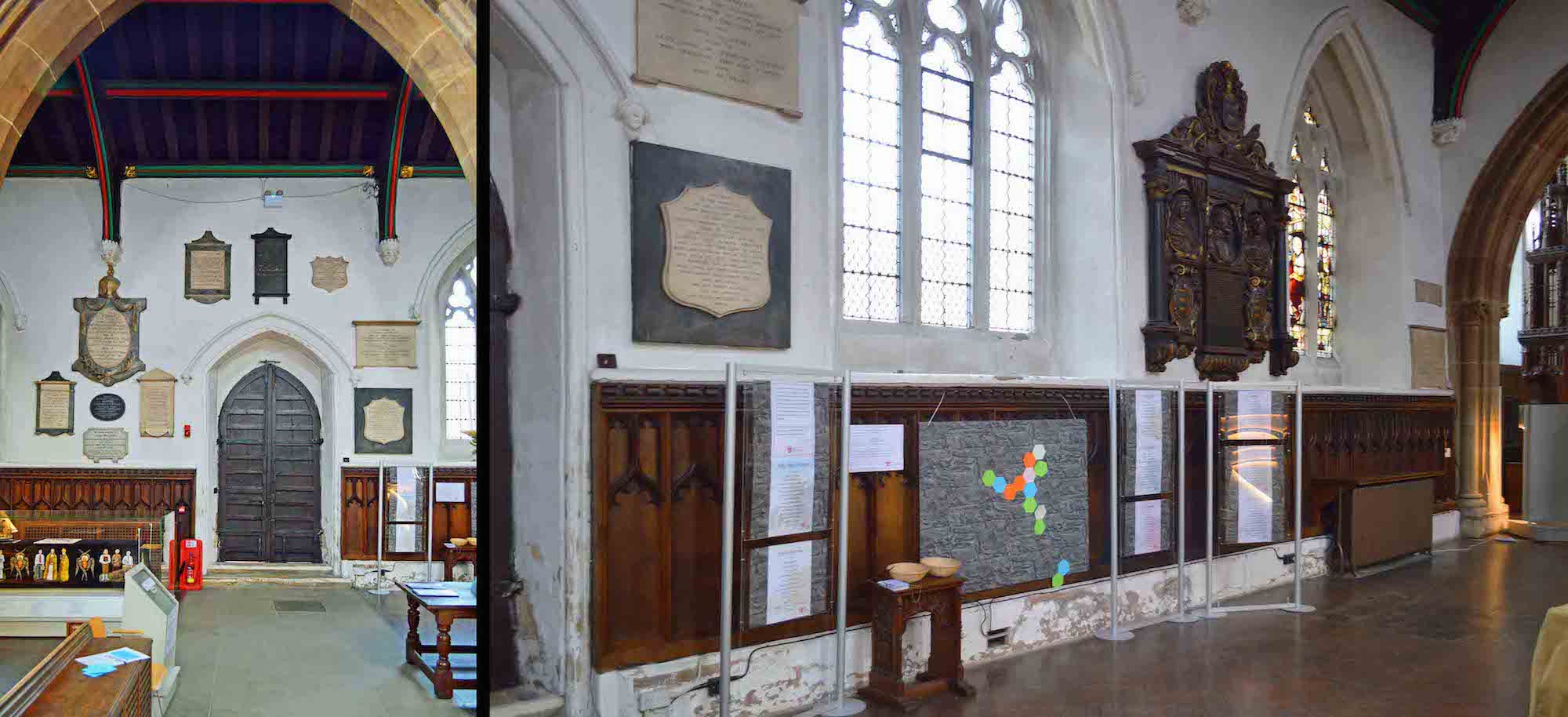
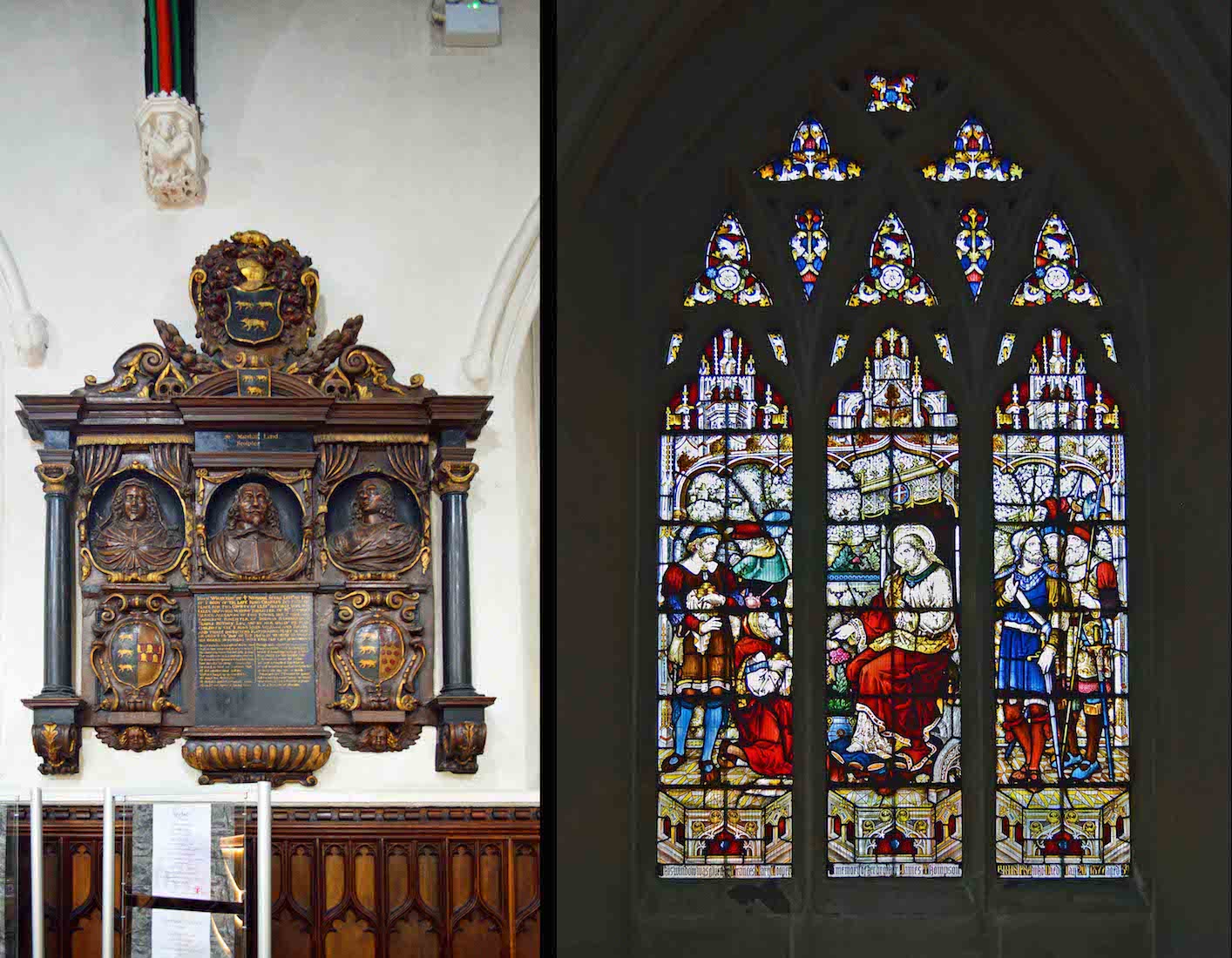
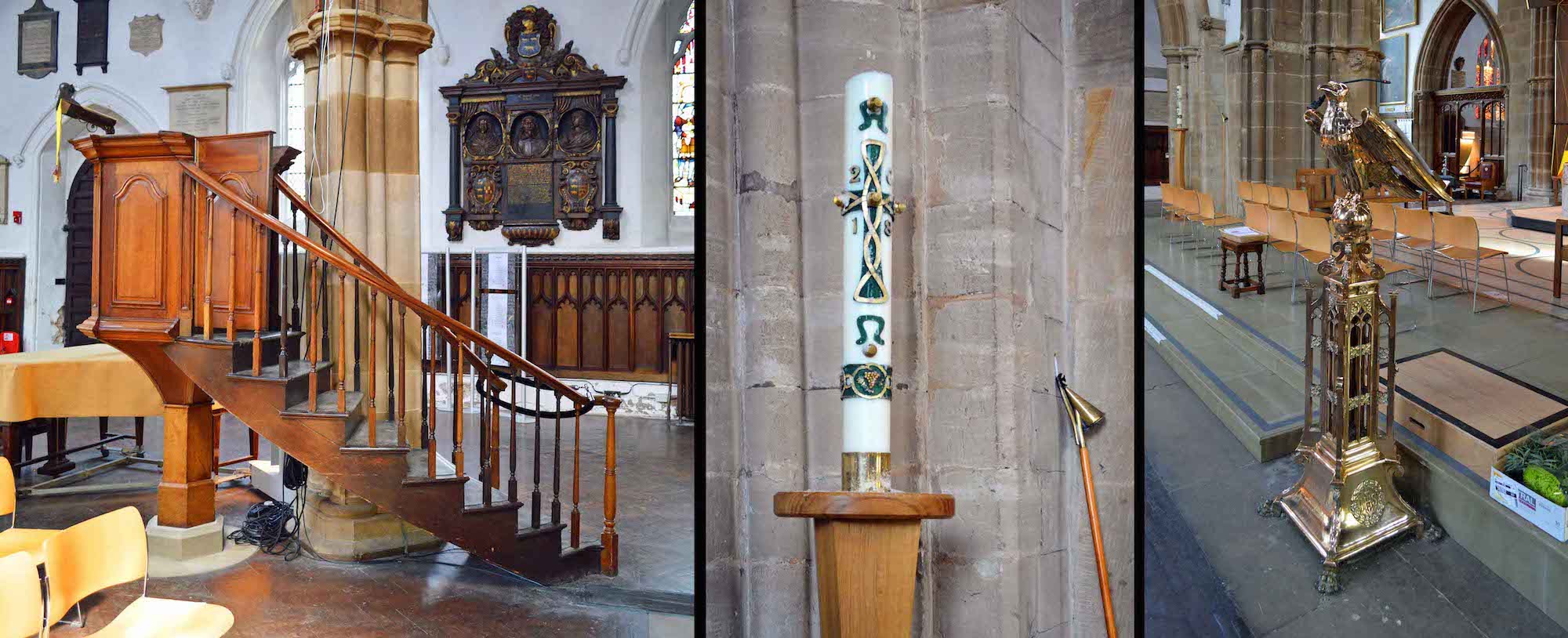
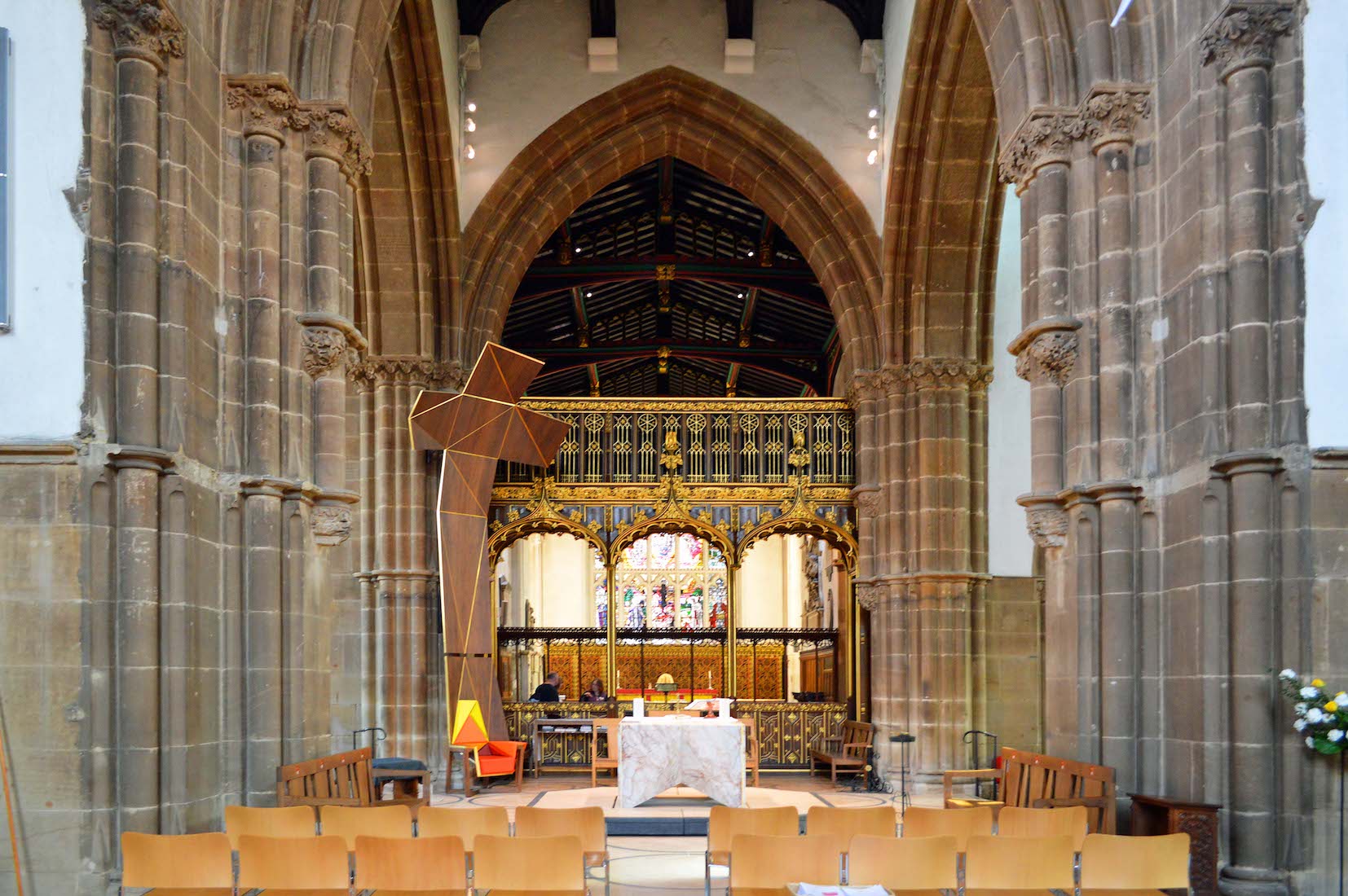
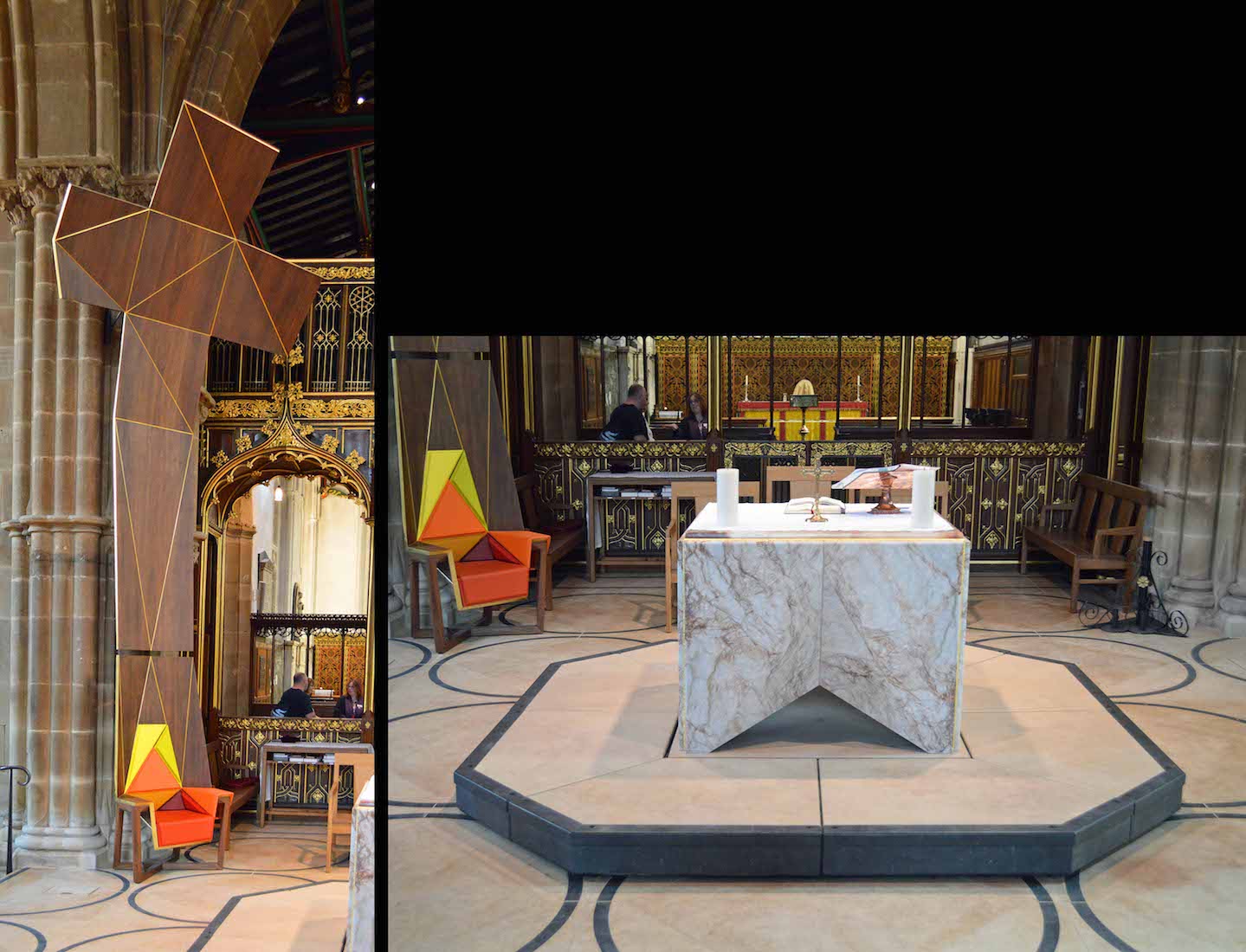

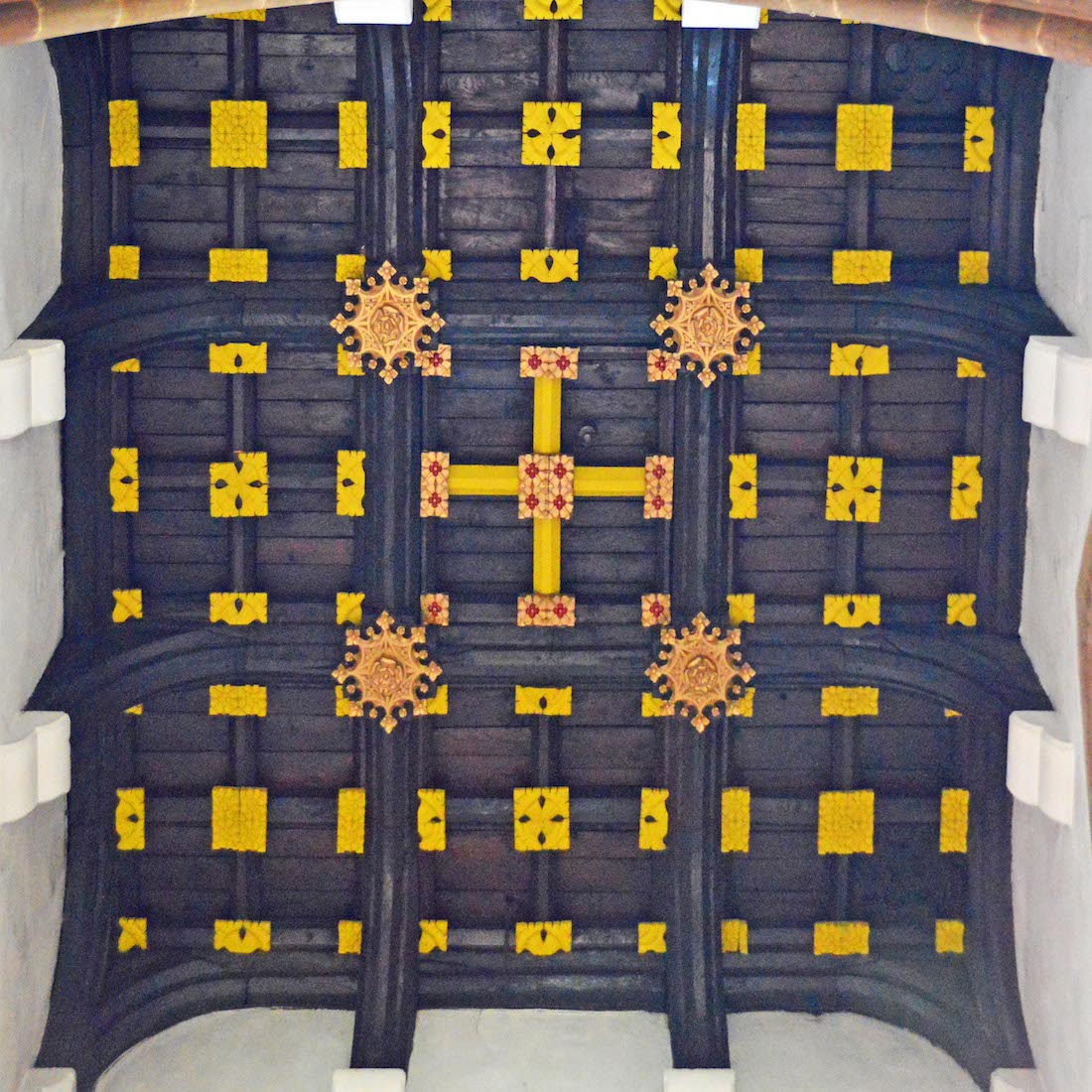
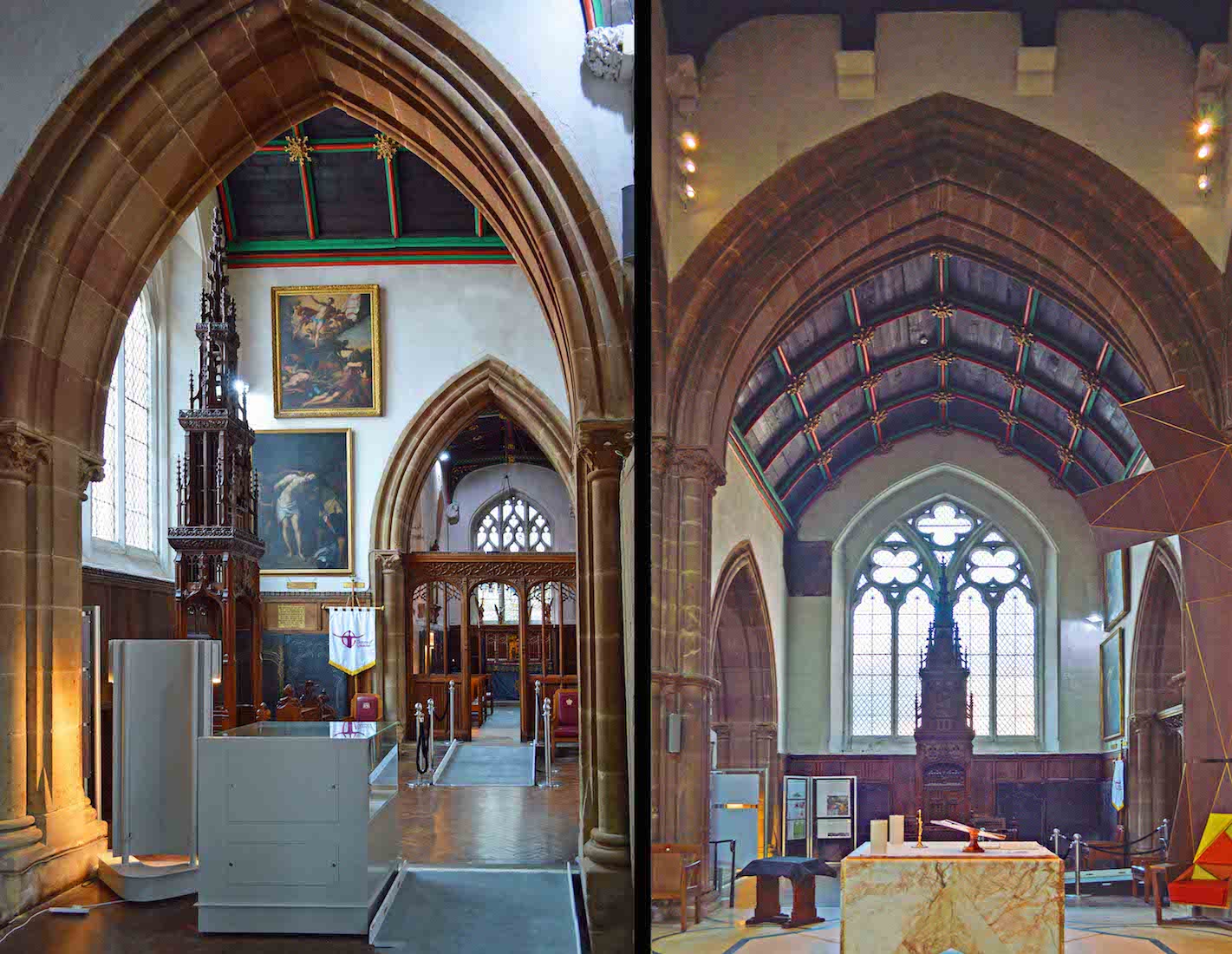
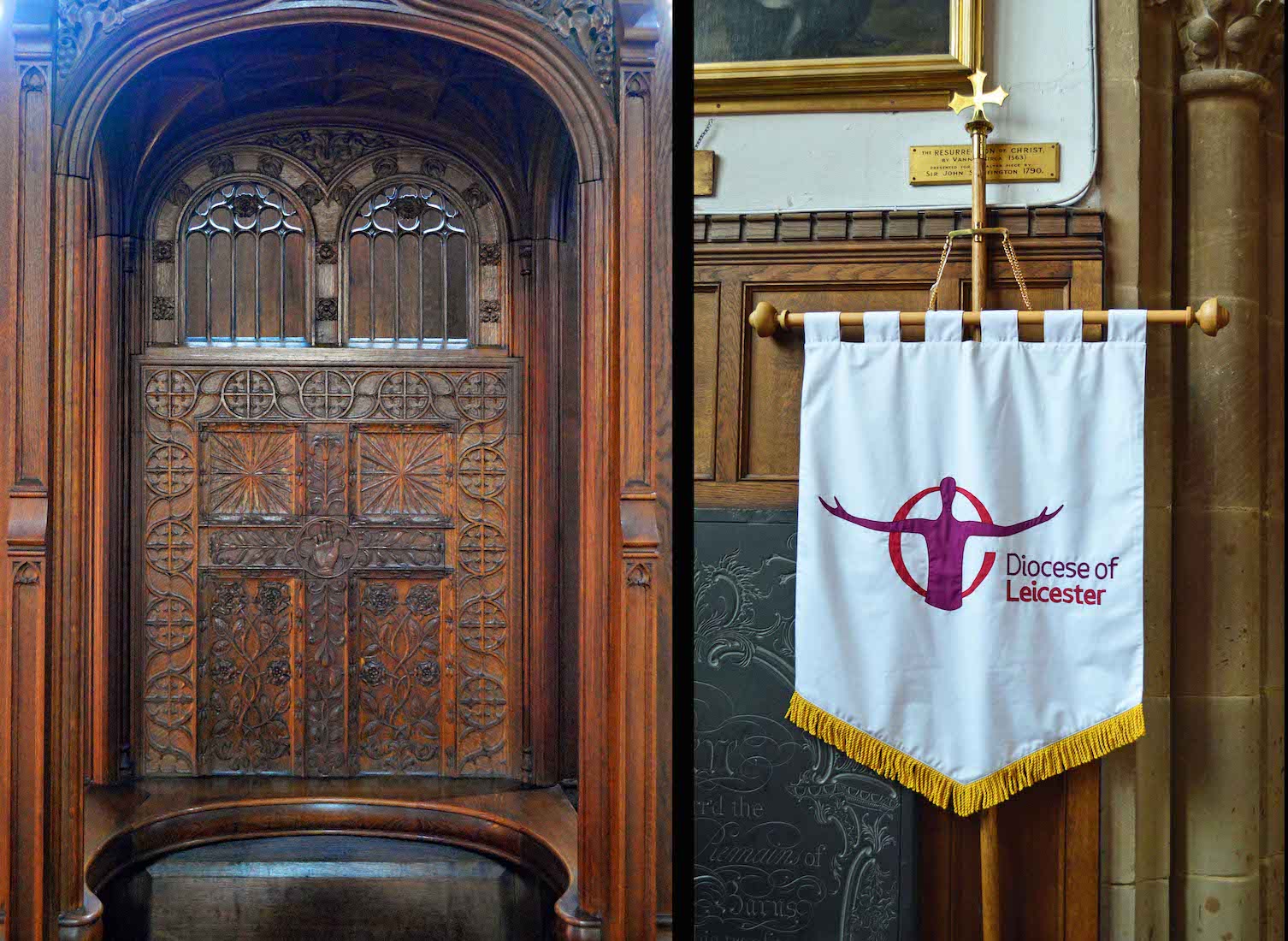
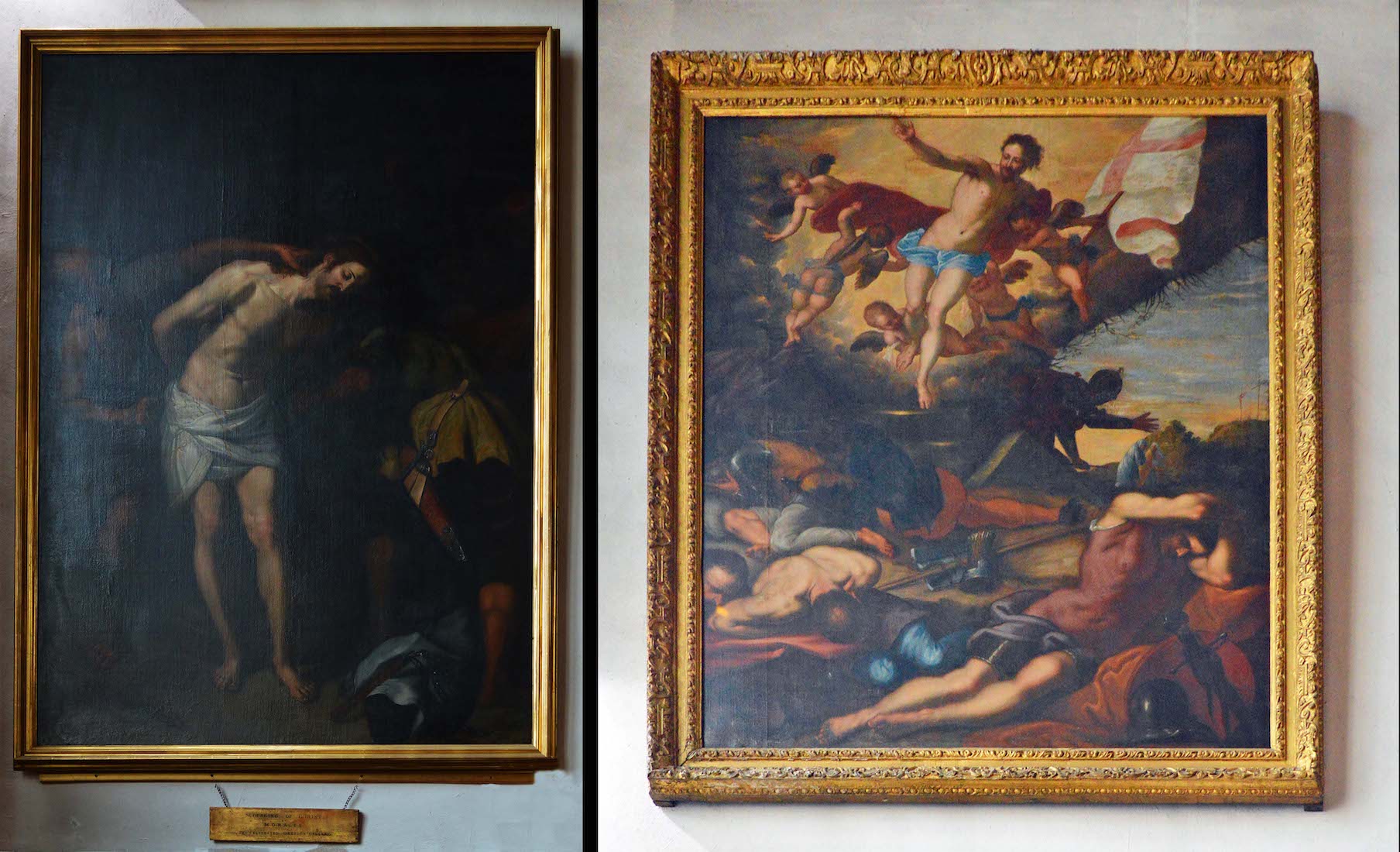
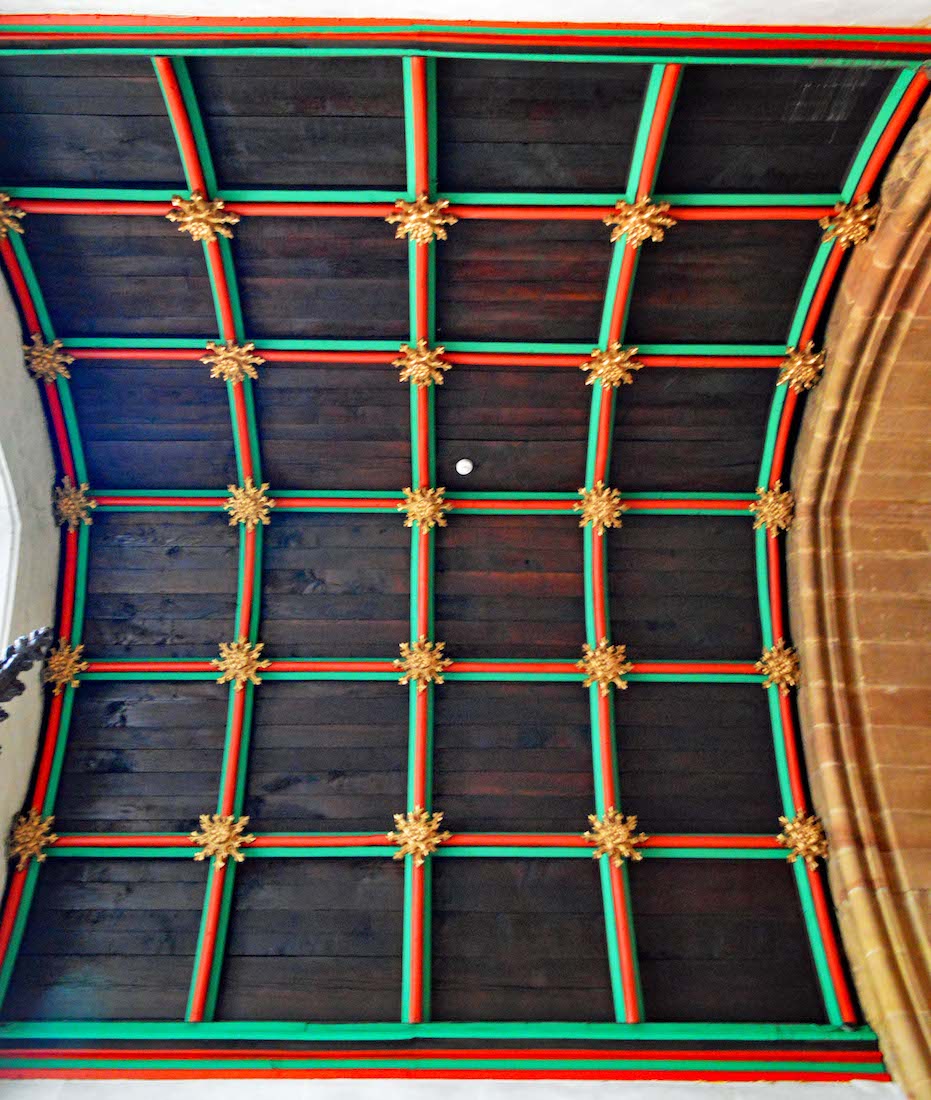
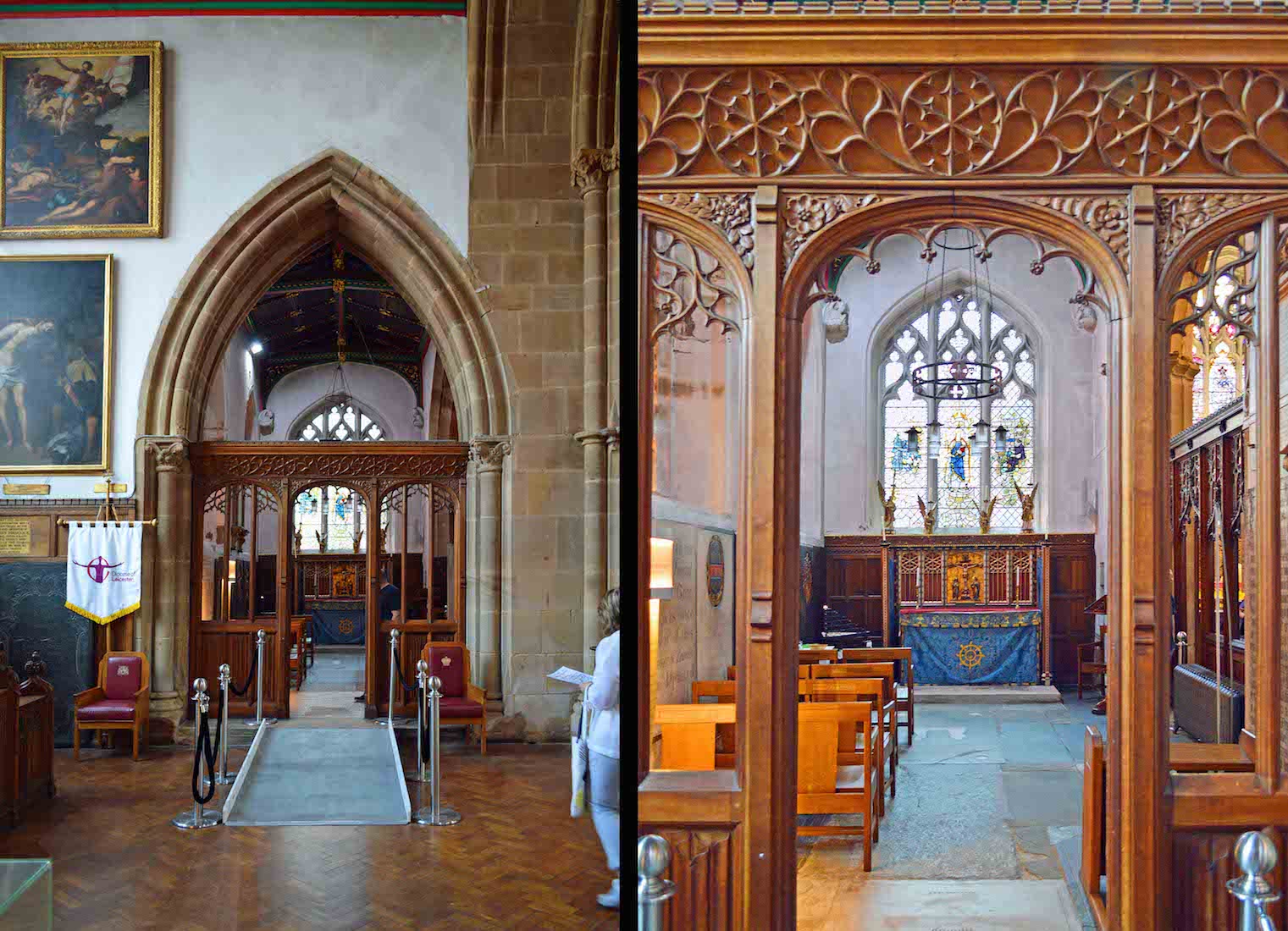
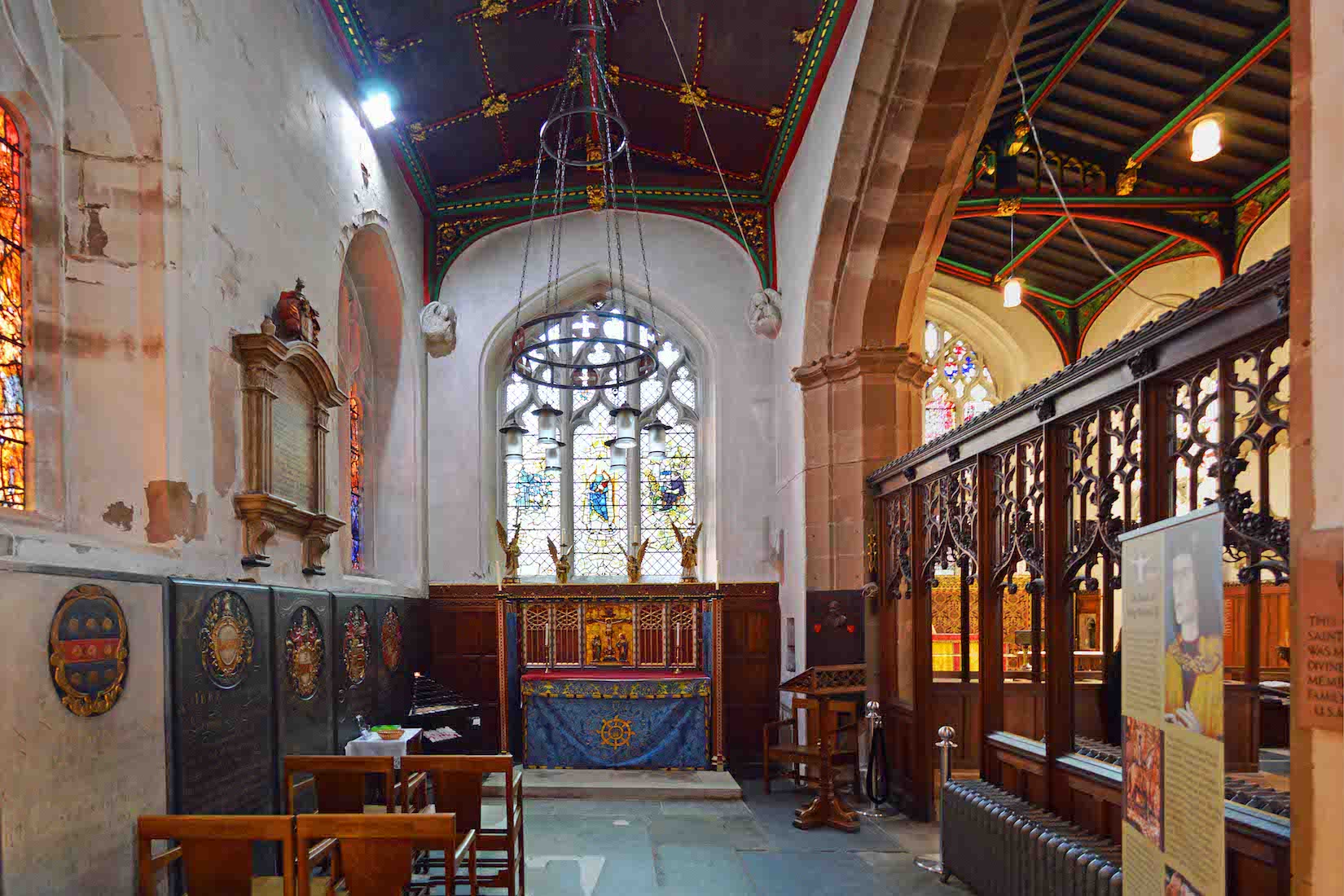
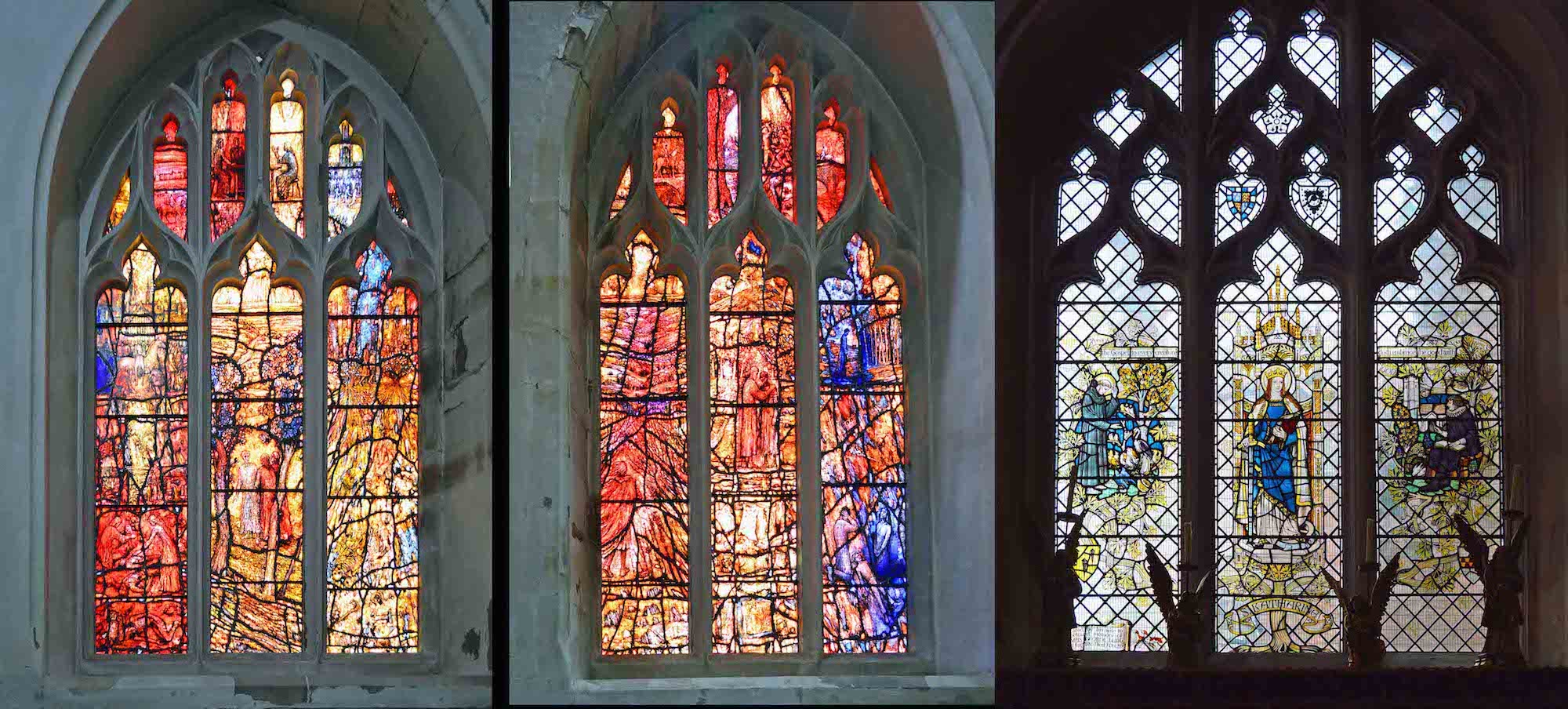
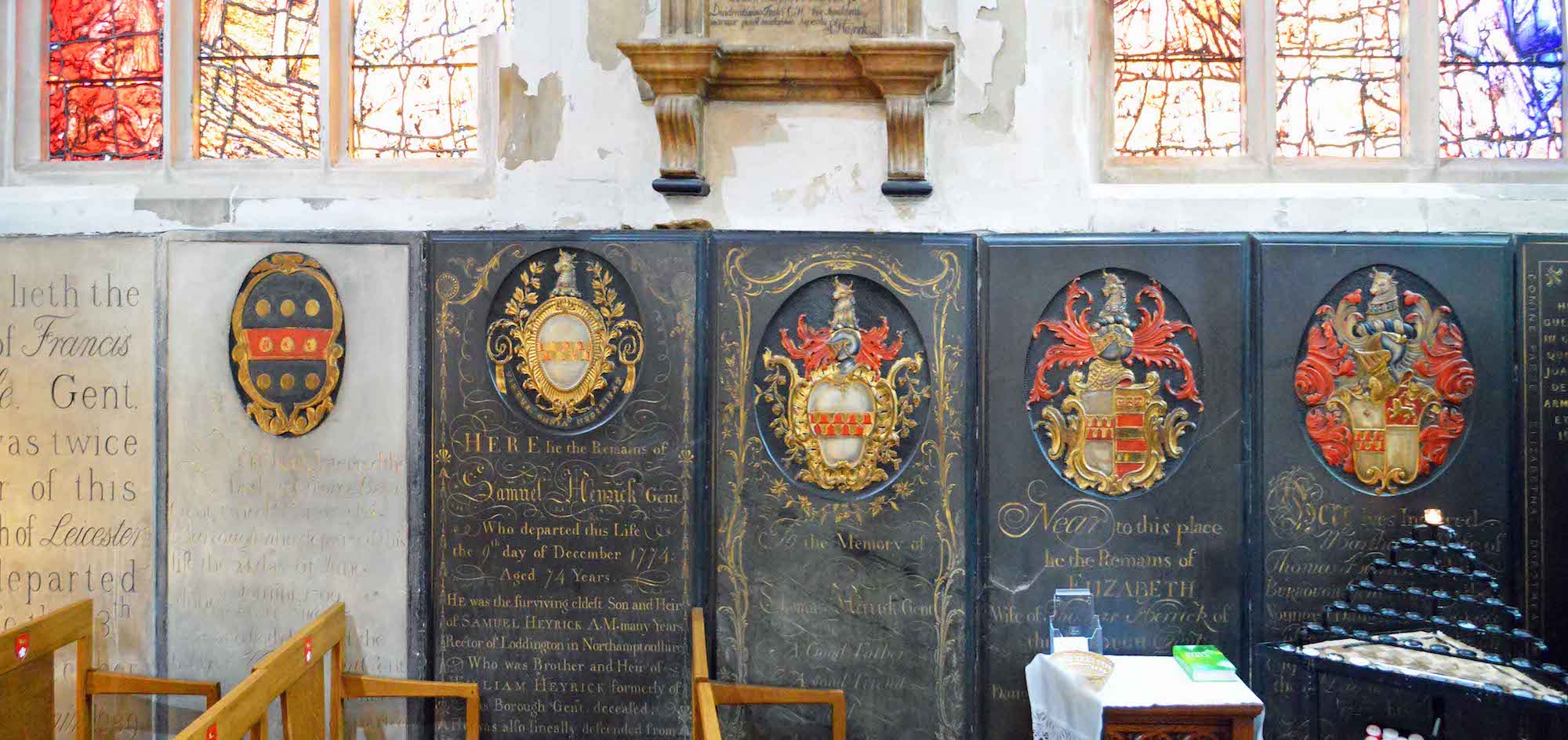

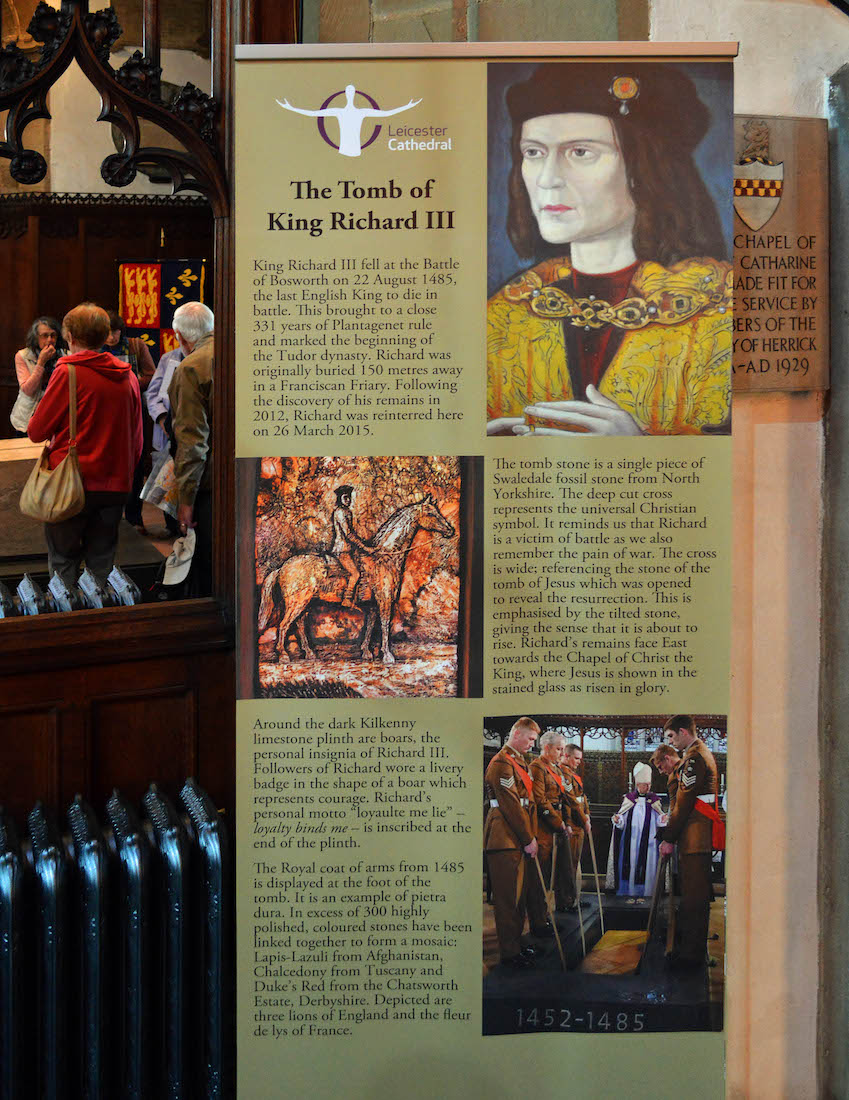
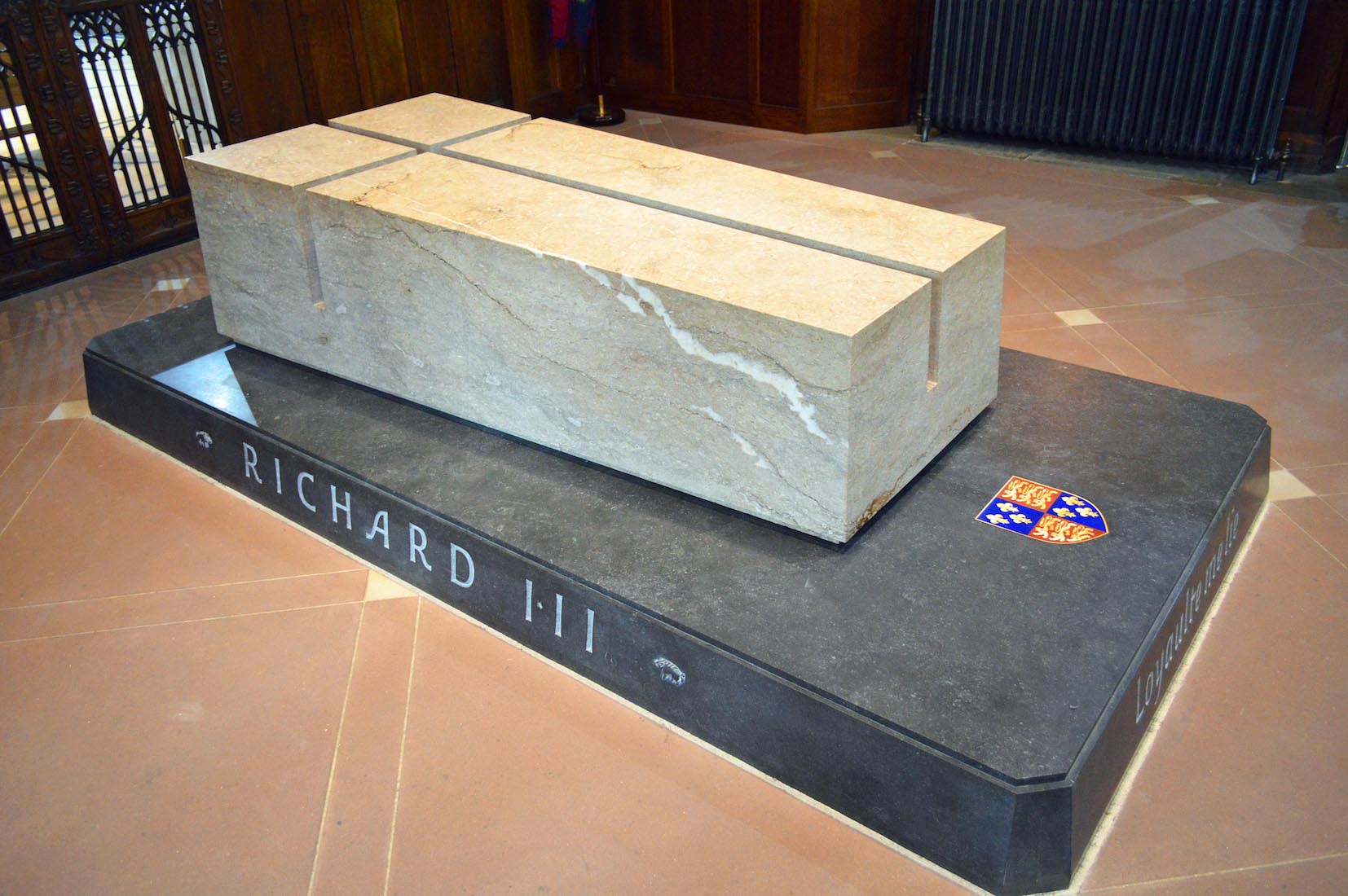
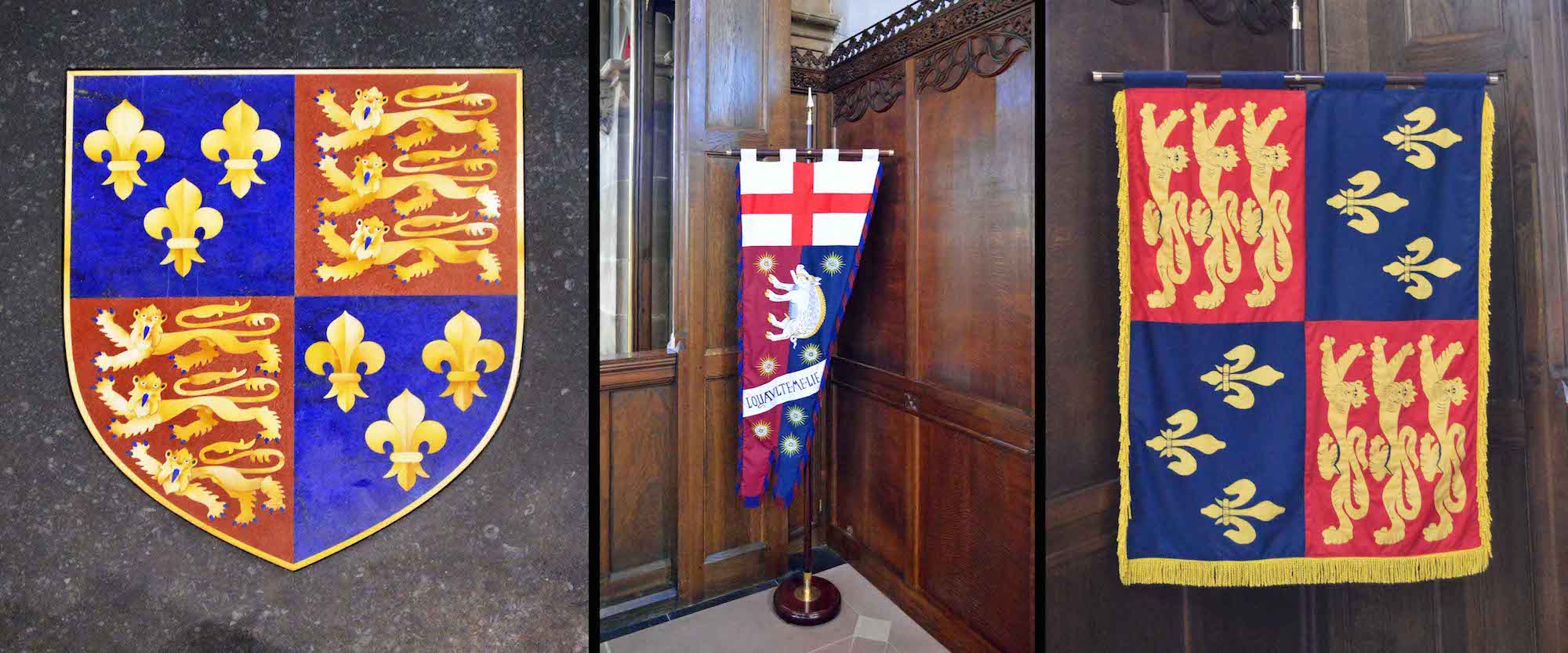 TO #41 – >
TO #41 – >